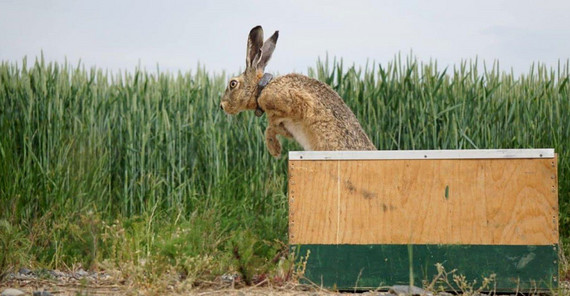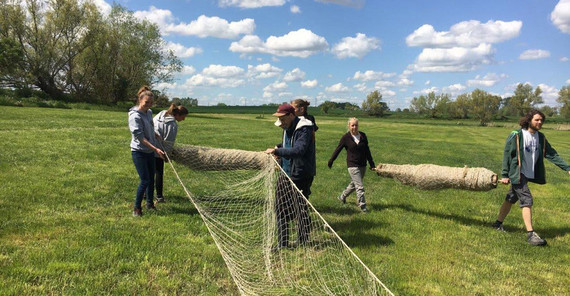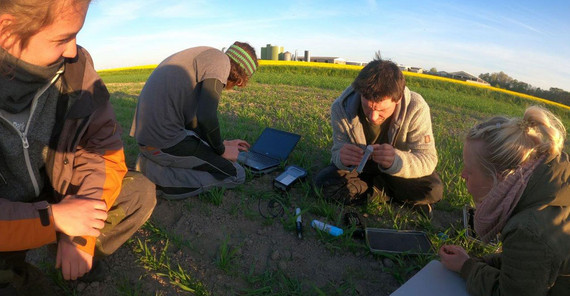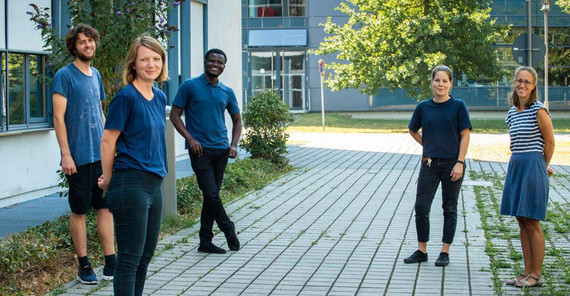"The ongoing intensification of land use dramatically reduces the amount of residual areas that can serve as habitats for wildlife and plants," says Prof. Florian Jeltsch, spokesperson of the Research Training Group. Yet these areas are important biodiversity hotspots in the landscape. However, their small size often leads to intensified interaction between and the displacement of species living there. "This makes a stable balance of species increasingly unlikely." To a certain extent, however, some species are able to adapt to the increasing fragmentation of their habitats and stronger competition for resources, Jeltsch explains. Among other things, this depends on their ability to adapt their movement patterns to a predominantly hostile environment. "To understand the medium- and long-term effects of different land-use options on the future of biodiversity, it is therefore important to better understand both the movement patterns of species in modern agricultural landscapes, and the changing interactions between them."
Moving organisms provide links
In the Research Training Group, ten doctoral students are investigating various facets of land use in relation to the balance of species. What all projects have in common is the model of "mobile links" originally developed to describe how moving animals provide links between communities and ecosystems that otherwise remain separate. The ways organisms move in their habitats significantly impact the composition of species communities and thus biodiversity. Organisms are highly reactive to human-induced changes in climate and land use – including changing their movement patterns, which is crucial for understanding the decline in biodiversity.
Besides, all projects of the “BioMove” Research Training Group are based in a common field site: the glacial area around the River Quillow in north-eastern Brandenburg. It comprises forests and farmland, but also a system of glacial depressions known as kettle holes. Here, evolutionary biologist Katrin Kiemel studies zooplankton communities. "In the kettle holes, you find isolated populations that are representative of other isolated habitats," she says. "All across the landscape, zooplankton forms metacommunities as tiny organisms such as water fleas and rotifers are spread by wind or through mobile links such as mammals and birds." Agricultural work practices affect the structure of local communities by changing environmental conditions. So Kiemel examines water and soil samples of zooplankton in the laboratory, sometimes under a microscope, to understand the pathways along which they spread and settle, as well as the composition of species. Her research focuses on local adaptations that may be beneficial for the survival of zooplankton species in a constantly changing environment.
Plant seeds and zooplankton
By contrast, ecologist Maxi Tomowski is researching for her dissertation which factors influence the gene flow of plants in an agricultural landscape. "The gene flow between plant populations may be impacted by limited movements of pollinators, for instance, or a spatially limited distribution of plant seeds," she explains. "For a more exact determination, we need to monitor the dispersal of individual pollen and seeds." Research in the Training Group "BioMove" has indicated time and again how closely interwoven animals and plants in a landscape area are. In a joint field experiment, Tomowski and Kiemel equipped waterfowl with GPS transmitters to analyze their movement patterns. Besides, the ducks' plumage was washed out, as it transports plant seeds and zooplankton. This way, the spatial distribution of plants or zooplankton can be compared to the ducks' movements.
Mammals also play an important role in the distribution of plant seeds as they are extremely mobile. Animal ecologist Jonas Stiegler is studying the role of the brown hare as a mobile link to find out how efficient the hare is in distributing plant seeds and what impact the type of field use has. "The European brown hare is a typical species for agricultural landscapes," Stiegler says. "I fit brown hares with GPS collars and track their movement patterns. To quantify the correlations between the distribution of plant seeds and the hares' foraging for specific species such as wild herbs, I also used remote sensing data and network-based tools."
Finding correlations through statistical methods
Mathematician Ulrike Schlägel is a postdoctoral researcher. In the Research Training Group, she supervises the theoretical concepts of "BioMove," especially the modeling of animals, plants, and landscapes through statistical methods. Her models include both mobile links and the mechanisms allowing species with similar ecological needs to coexist rather than compete with each other. In a survey study, she compiled research findings from different ecological disciplines to find out how movement processes influence the composition of species. "When it comes to coexistence in a community of species, one or two key factors can be crucial to better predict the future development of communities and understand biodiversity patterns," she points out.
Kiemel, Tomowski, and Stiegler intend to finish their doctoral dissertations by 2021. So far, eleven PhD students have successfully completed the "BioMove" Research Training Group and made important contributions to the biodiversity debate. In October 2021, the third round will start with new PhD projects.
The Project
The “BioMove” Research Training Group studies the effects of organismal movements in dynamic agricultural landscapes on biodiversity.
Participants: University of Potsdam, Freie Universität Berlin, Leibniz Institute for Zoo and Wildlife Research, Leibniz Centre for Agricultural Landscape Research
Funding: German Research Foundation (DFG)
Duration: 10/2015-09/2024 (extended: 10/2019)
www.biomove.org
The Researchers
Prof. Dr. Florian Jeltsch studied physics and theoretical ecology in Marburg and has been Professor of Plant Ecology and Nature Conservation at the University of Potsdam since 2000. He is the spokesperson of the “BioMove” Research Training Group.
Mail: jeltschuuni-potsdampde
Katrin Kiemel studied ecology, evolution, and nature conservation in Potsdam and joined the “BioMove” Research Training Group in 2018 to do her doctorate on diversity in zooplankton adaptation and dispersal.
Mail: kiemeluuni-potsdampde
Maxi Tomowski studied ecology and has been doing her PhD on the gene flow of plants in agricultural landscapes in the "BioMove" Research Training Group since 2018.
Mail: mtomowskuuni-potsdampde
Jonas Stiegler studied animal ecology and tropical biology in Würzburg and has been doing his PhD in the “BioMove” Research Training Group on the function of animals as mobile links in agricultural landscapes since 2018.
Mail: stiegleruuni-potsdampde
Dr. Ulrike Schlägel studied mathematics in Bielefeld and obtained her PhD in Alberta, Canada. Since 2015, she has been a postdoctoral researcher in the "Bio-Move" project with a focus on scientific synthesis and concept development. Recently, she won a grant to lead an independent junior research group in the DFG’s Emmy Noether Programme.
Mail: ulrike.schlaegeluuni-potsdampde
This text was published in the university magazine Portal Wissen - One 2021 „Change“.




